
It has been nearly a year since I first took possession of my GLOCK 19 MOS, which quickly found itself in a holster in my waistband on a very frequent basis. During this time, I’ve had a JP Enterprises JPoint Reflex Sight mounted to the pistol with one of the factory MOS mounting plates.
While the JPoint is slim enough that I could almost get a full co-witness on the factory sights — close enough that I felt comfortable shooting the gun accurately should the dot fail — it wasn’t completely there. Thankfully, JP has solved this with their Ultra Low Mounting Plate.

The factory sights can now be fully aligned with the front remaining visible through the sight window. Should the dot fail for any reason, the “iron” sights can be used in a completely normal fashion. Additionally, the top of the JPoint’s rear sight notch now aligns with the top of the factory rear sight. I may well drift the rear sight clean off the gun at this point, as I prefer an all-black rear anyway.
The two photos above are of the factory mounting plate.
And those two show the JP plate.
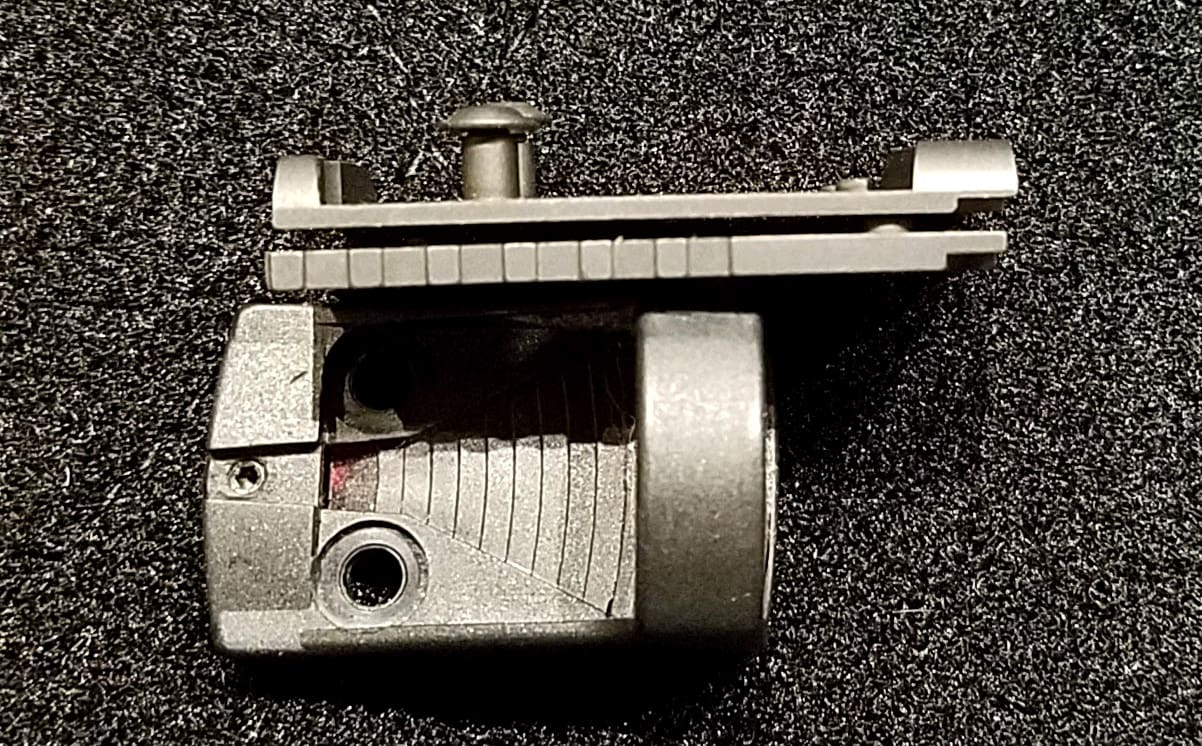
The difference in thickness isn’t exactly earth shattering, but it sure changes the game when sticking with the factory sights or when using aftermarket, yet factory-height sights. That’s a valid choice, by the way, as there are significantly more options on the market at factory height than there are at “suppressor height.” Tall sights can also interfere with some holsters.
Aside from the obvious selling point of the height difference, the JP mount is also made specifically for the JPoint sight (with both the mount and the JPoint being made by Shield Sights in the UK, by the way, it also fits their version of the JPoint). It fits the sight much more nicely than the factory MOS plate does (heck, it fits the slide better) — no big gaps front and rear — and includes hardware that actually works with it. The two machine screws seen above thread into posts, appropriately spacing them off the plate and controlling the amount of pressure applied to the optic.
As the plate is thinner than the factory ones, it comes with new bolts to secure it to the slide, too. One of them is installed in the photo above, while the bottom one eluded me for a few days.
I’ve only put 100 rounds through the gun since installing the JP Ultra Low Plate, but feel confident in saying that it works. The thing may be low-profile, but it’s steel and it’s rock solid, plus the JPoint itself is one of the lightest reflex sights on the market. I can’t imagine the plate going anywhere, bending, breaking, or otherwise distorting. After getting it sighted in, the first round from a sandbag nearly shared the same hole as round 100. That’s at about 40 yards, mind you, which is a definite advantage of shooting with a nice, clean, bright red dot.
The rest of the rounds were spent while running around the woods, shooting from behind trees, kneeling and standing, on the move and stationary, engaging a target between 25 and 50 yards. It felt great. The same as before, really, but now I can truly use the “irons” if needed. My GLOCK also looks nicer (for a GLOCK, mind you) thanks to the improved fit of the optic within the mount and even of the mount to the gun. Happy camper.
Specifications — JP Rifles JPoint Ultra Low GLOCK MOS Mounting Plate:
Material: steel
Origin: made in the UK
MSRP: $89.99
Ratings (out of five stars):
Quality * * * * *
Clean machining, nice finish, quality hardware, solid construction. Fit is very precise.
Function * * * * *
It does exactly what it’s supposed to — it lowers the JPoint until the factory sights can be properly co-witnessed through the sight window. Not only that, though, it lowers it right to where the JPoint’s integrated rear sight matches the height of the factory rear sight and can, therefore, be a replacement for it.
Overall * * * *
It’s a great product that does what it’s supposed to do and does it very well, but $89.99 feels a bit rich. Granted, with JP buying them from Shield, who’s making them in the UK then shipping them over, I’m not suggesting it isn’t an entirely “fair” price. It’s just, you know, expensive. In the pursuit of GLOCK perfection, though, it may well be worth it.

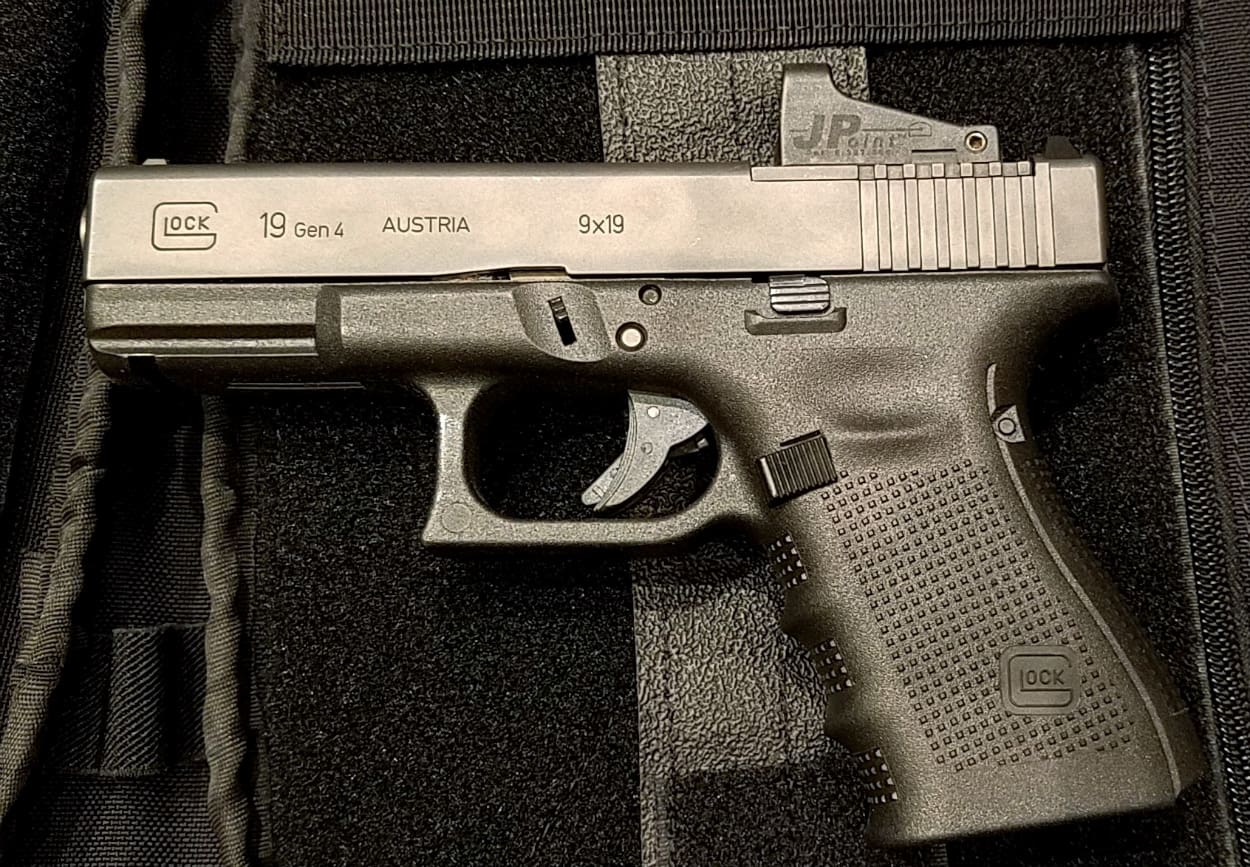
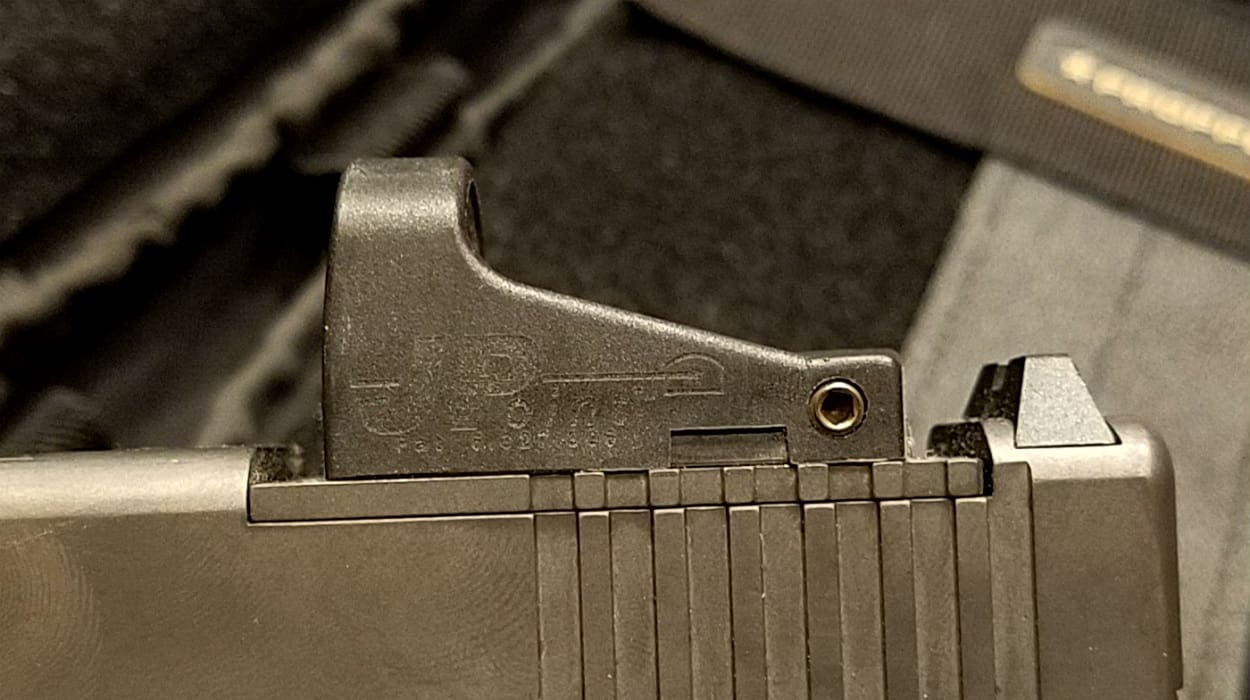
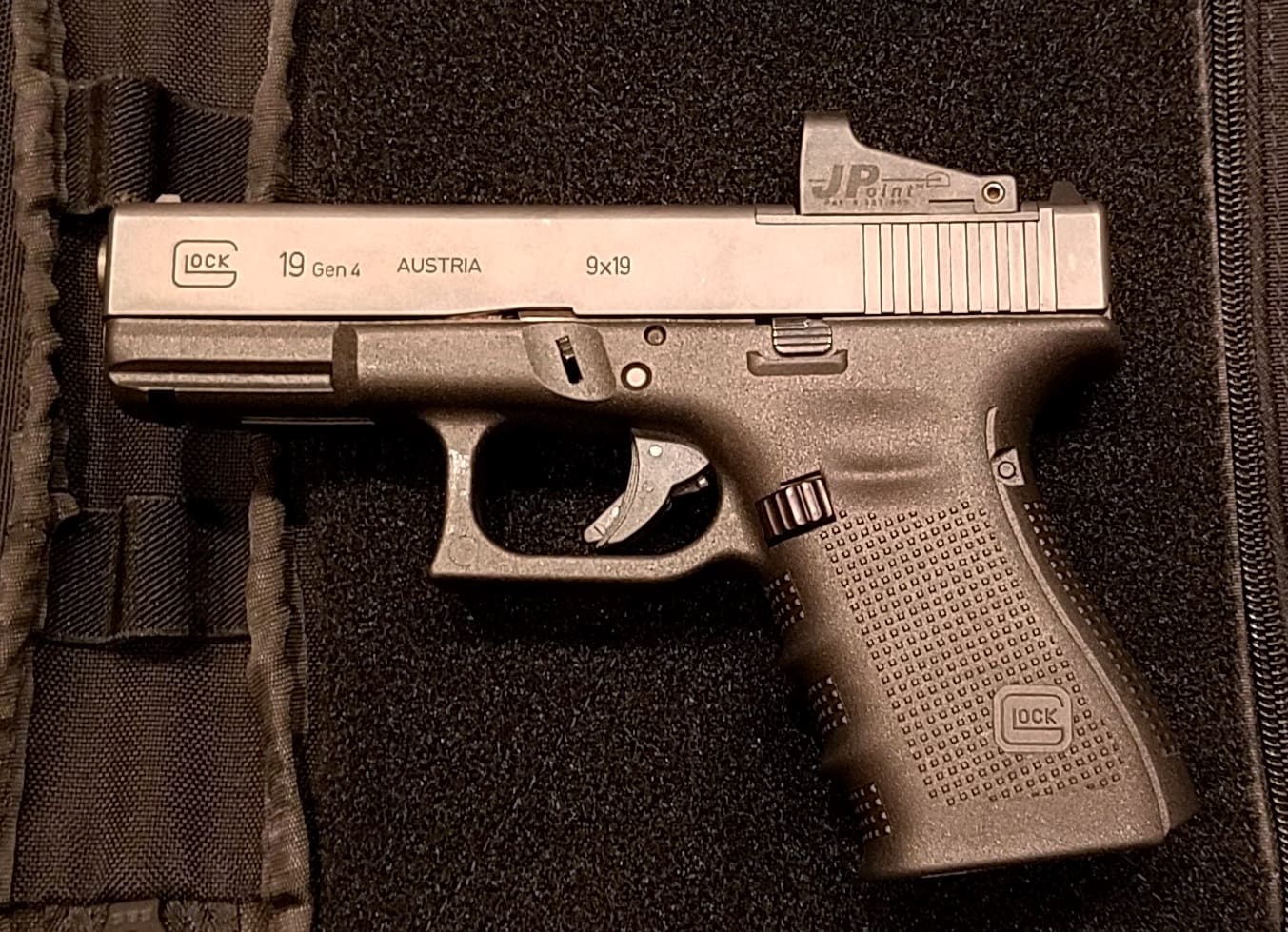
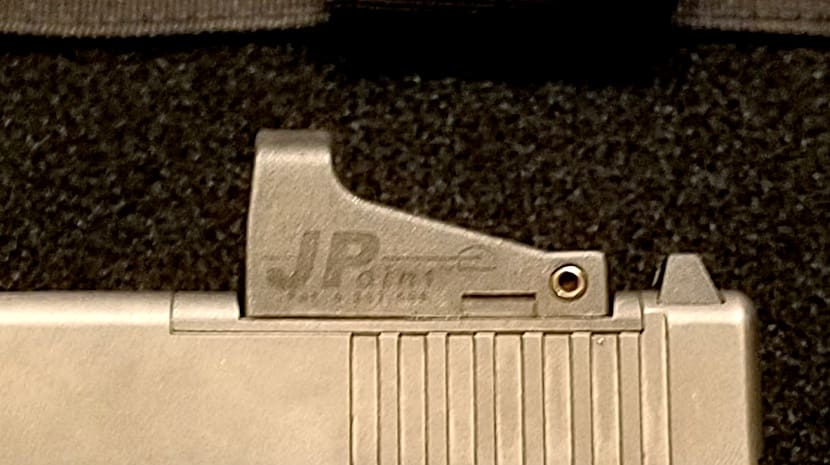
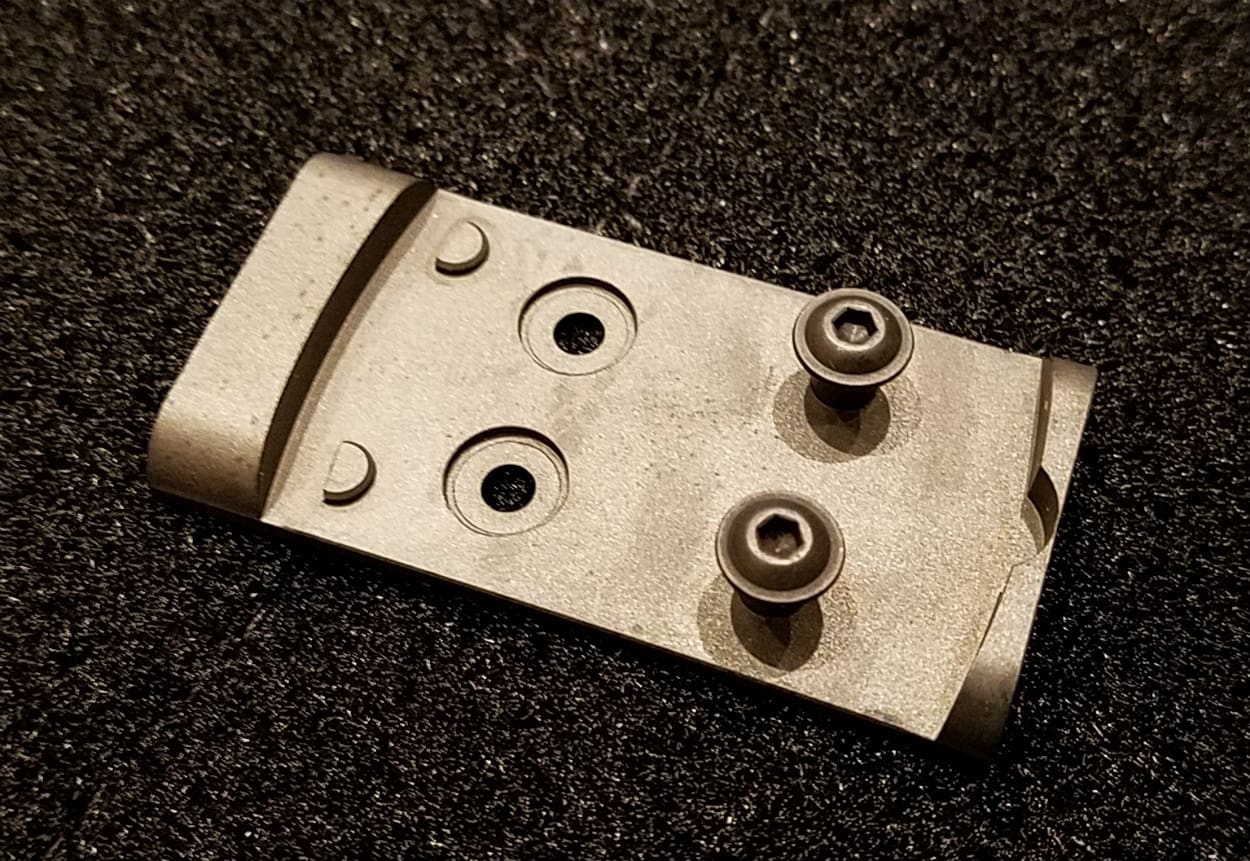
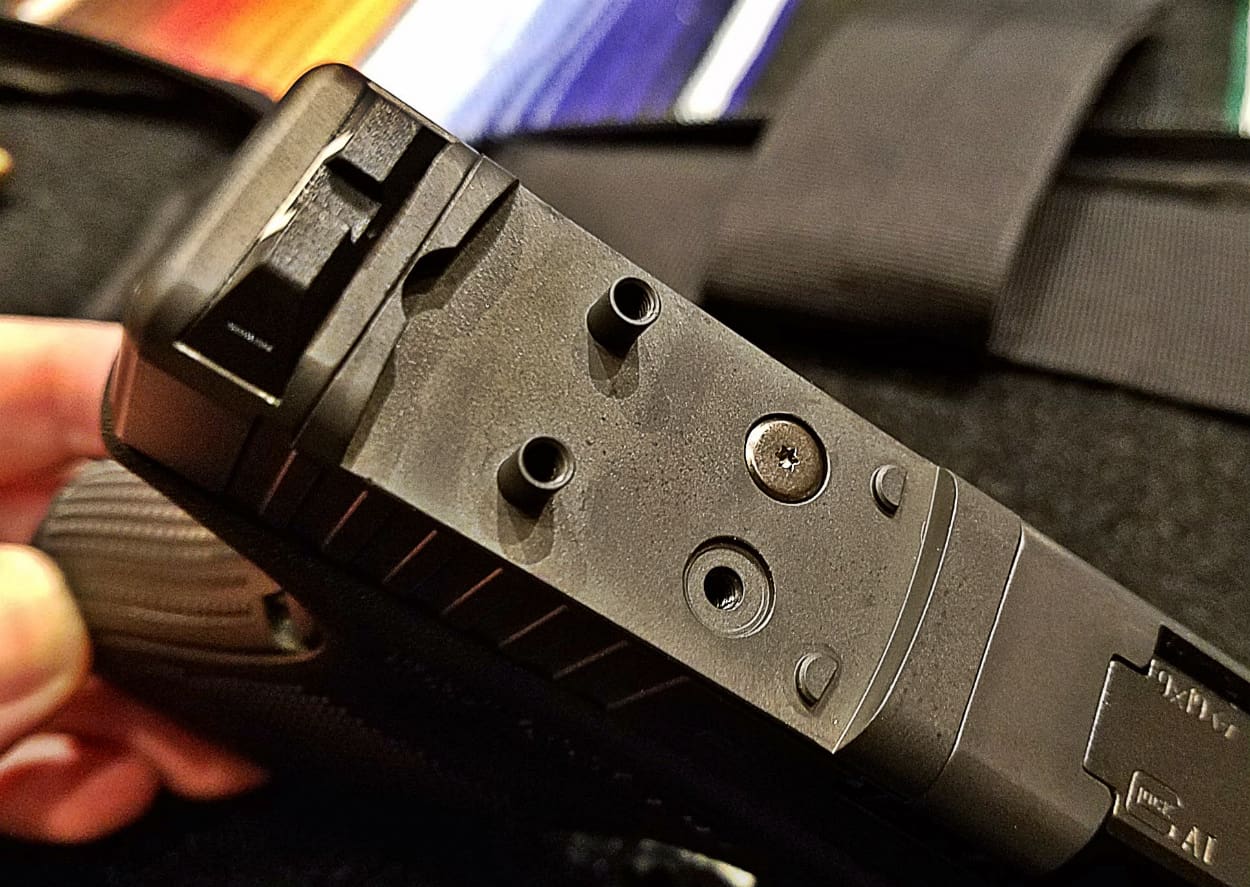
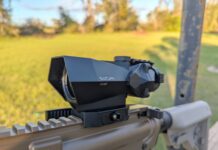


How is that sight. Is it on par with the likes of trijicon and leupold?
I don’t have enough personal experience with those ones to say. I’ve briefly shot guns with them, but haven’t owned one or played with them beyond that. As for the JPoint, I’ve been very happy with it. Crisp, bright dot that adjusts very nicely to ambient lighting level, zero parallax error, one of the very lightest weight reflex sights available and also one of the shortest (the bottom of it is particularly slim), battery lasts a dang long time. The lens is plastic (lexan or whatever) rather than glass, which may actually make it stronger than most of the thin glass lenses generally used and certainly makes it lighter. It may be more scratch-prone but I’ve yet to scratch it.
Thanks for the writeup.
did you find it difficult to acquire the red dot as you were bringing the gun up on target? I hear that can be a problem for red dots.
Any draw backs at all for a red dot sight?
Thanks
Bill
I think the easiest way to find that dot is doing what you’d do otherwise — raising the gun and looking for the front sight, with the front sight a bit high, then (or while) bringing it down onto target. I do think it takes more practice to make it fast and natural than it does with iron sights. Of course one other thing is that you’re going to end up focusing on the target instead of on the front sight. People may get slowed down by raising the gun and focusing on the reflex sight itself and trying to find that dot that way, which is hard, vs. focusing through the sight at the target (or moving from front sight to target focus, as the case may be). When really used to a specific pistol, the dot appears when focusing on the target the whole time and bringing the gun up to the same firing position you always bring it up to at the [wrist] angle you always hold it at, and I don’t think tracking the front sight is still needed.
I’d say it’s more complicated if you haven’t really drilled in the muscle memory of bringing a gun to the same place every time. The folks I’ve shot with who only shoot rarely and just for plinking at cans and such have a hard time finding the dot. Partially because they’re moving the gun around looking for it rather than pressing the gun into their honed-in shooting stance and having the dot just show up where it should.
That said, for self-defense use at typical, close-in, self-defense distances I’d say f**k the dot. The frame of the reflex sight creates a window, and if your target is inside of that window you’re going to hit it. That’s the fastest way to use a sight like this and if you’re inside of 5 yards you’re going to get hits on target if your presentation is at all drilled into your muscle memory and that target is showing up inside of the frame of the optic, dot or no dot.
The biggest plus side is probably accuracy and confidence at longer ranges. TTAG had a post a couple months ago along the lines of “would you take that shot?” referring to a ~50-yard pistol shot where your target was partially obscured. With a pistol equipped with iron sights, that’s a hard shot. Under stress with people around? Yeesh. With a red dot like this one, though, I can (at least on the range) confidently make head shots at that range. I would not make that claim with irons on a pistol.
I like to use it to rack the slide, too.
On the downside, it does get lint on it after I’ve been carrying it for a while under my shirt. I probably wipe it off weekly or so to keep it clean.
Great info, thanks for the above. Referencing your last line…
I’ve always been concerned about condensation, lint, and other “crud” accruing on the lens of any optical sight carried IWB. I regularly draw my pistol at the end of the day to clear it, and find flakes of anti-perspirant/deodorant on the grip and slide plate, along with the normal lint and dust. I’m also a bit of a sweaty person when it’s warm and/or humid outside, and finding sweat beaded on the frame and slide of my pistol isn’t out-of-the-ordinary, either. Do you think that any of this (alone, or in combination) could block enough of the view through this style of sight to render it useless until cleaned/wiped?
Thanks for any info, experience, or opinions you can provide.
I’m sure it’s possible. Hasn’t ever come close for me, though. Even with a lot of fine cotton dust covering it, I don’t notice it unless I focus on the sight itself. Looking through it, it really isn’t apparent until it’s cleaned that there was a ton of dust on it (when suddenly the view through the lens is a bit more vivid). The dot is really bright regardless. I’ve shot the thing in heavy rain without issue. Water didn’t screw anything up although I suppose if a giant drop was right in the middle (and managed to stay there despite the lens being vertical when you’re aiming the gun) it might distort the dot. Haven’t really dealt with humidity yet. I know Tyler Kee has been successfully running a DeltaPoint on his M&P for a long time and, considering he’s in the Austin area, is subjected to humidity a lot.
Even if the dot failed and the lens was totally crudded up, you’d still have the optic’s frame to use as a reference…as that “window of death,” as some call it, for close targets.
Thanks again. That kind of hands-on stuff is what I wanted to hear about.
Follow the Front Sight, and you’ll be alright.
Train your brain, then make it rain!
Jeremy,
Thanks for this write-up! Does this mount only co-witness w/ the JP red dot? Do you think it would also work w/ a Trijicon RMR – or would you still have the dot higher than the irons in that case?
Thanks.
The mount is specific to the JPoint (and Shield’s aluminum version of the sight) so it won’t fit any others or at least is highly unlikely to. I used the MOS mount made for the Leupold DeltaPoint to mount the JPoint, so it’s possible that optic would work on this mount but I don’t think so. The optic itself is also thicker in its base, IIRC, so I doubt it would co-witness anyway.
I find the Shield SMS or RMS are tougher, brighter and more compact than any other red dots offered, they apparently started the whole red dot pistol mounted project back in the late 1980s so have more direct experience than any other manufacturer.
Now I use the Shield / JP adapter (Sight and Plate made by our trusted Allies in the UK) on all my Glock MOS guns.
The Shield combo is the only true low profile Co-Witness system available.
It’s better quality and better value than anything else I have bought or tried.
Comments are closed.